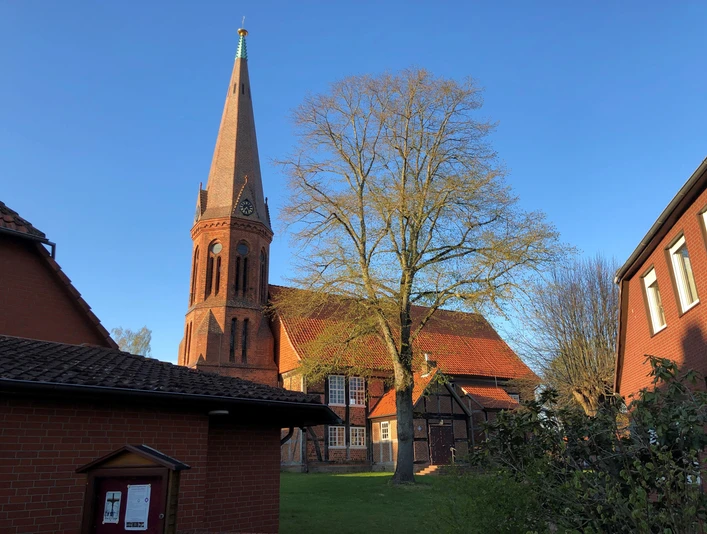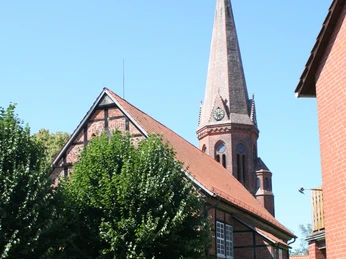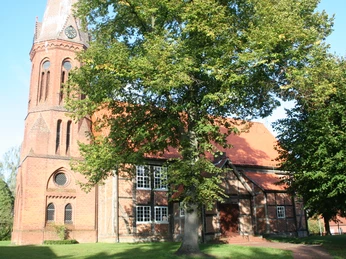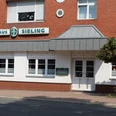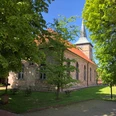- Photos & Map
How would you like to arrive?
- Call
- Description
- Good to know
- Nearby
As you approach the village of Estorf, the neo-Gothic tower of the Estorf Lutheran church, built at the end of the 19th century according to plans by the Hanoverian consistorial architect Haase, can be seen from afar. This tower replaced its dilapidated wooden predecessor in keeping with the taste of the time. While the church, built in 1696, with its unconventional half-timbering and a steeple that doesn't quite fit in with it, appears simple and village-like from the outside, the interior is almost unbelievably beautiful! The entire church was donated by the former Vice-Chancellor of Celle, Weipert von Fabrice. His wife donated the magnificent baroque interior of the church from her "private coffers", which has been preserved almost intact. In addition to the pulpit altar, it is above all the depiction of the Last Judgement that immediately catches the eye: inspired by the church in Neuenfelde near Buxtehude, it spans the entire ceiling of the choir room. In poignant simplicity, Christ as the Judge of the World shows the souls their place in this depiction: the wicked are mercilessly condemned, the righteous are resurrected to eternal life. The congregation celebrating the service sits under the depiction of the Holy Spirit as a dove, framed by the figurative round dance of the twelve apostles, which lines the ceiling of the nave and bears witness to the Apostles' Creed with scrolls.
A special gem can be found on the west gallery - the former farmhouse floor - above the pictures of the life of Jesus: the late Baroque organ from the workshop of the Hanoverian court organ builder Ernst Wilhelm Meyer from 1839, which has been preserved in its original condition. With its eleven stops, including an independent pedal, it may be a small organ, but it is still the oldest organ in the region that has been preserved in its original condition.
A special gem can be found on the west gallery - the former farmhouse floor - above the pictures of the life of Jesus: the late Baroque organ from the workshop of the Hanoverian court organ builder Ernst Wilhelm Meyer from 1839, which has been preserved in its original condition. With its eleven stops, including an independent pedal, it may be a small organ, but it is still the oldest organ in the region that has been preserved in its original condition.
Good to know
Openings
Author
Mittelweser-Touristik GmbH
Lange Straße 18
31582 Nienburg/Weser
Organization
Mittelweser-Touristik GmbH
License (master data)
Mittelweser-Touristik GmbH
Nearby
